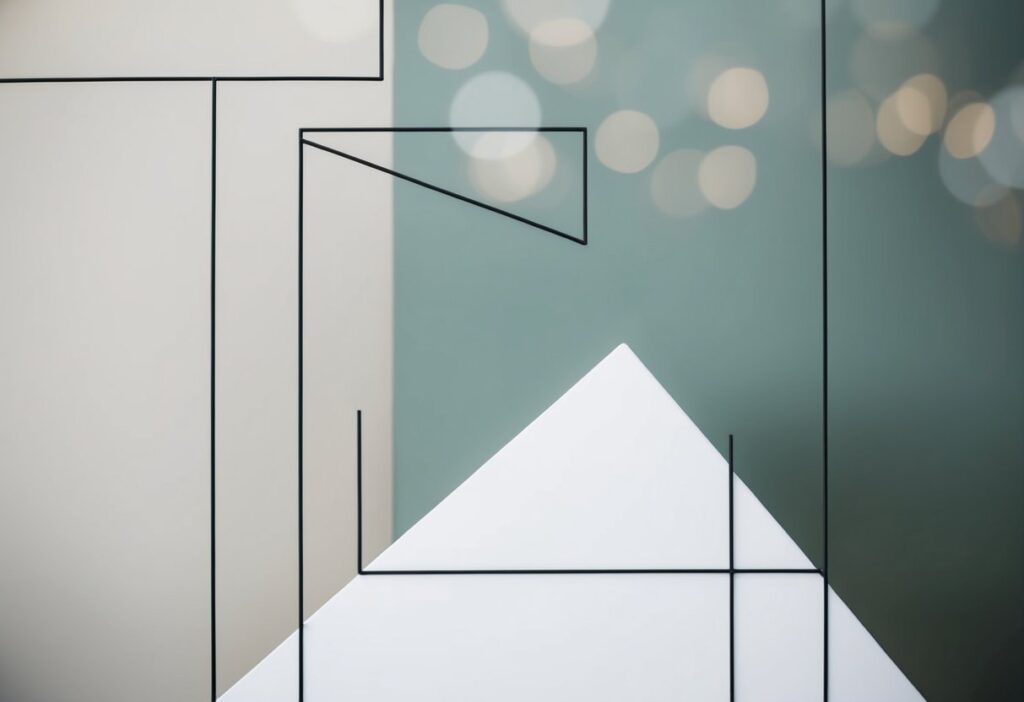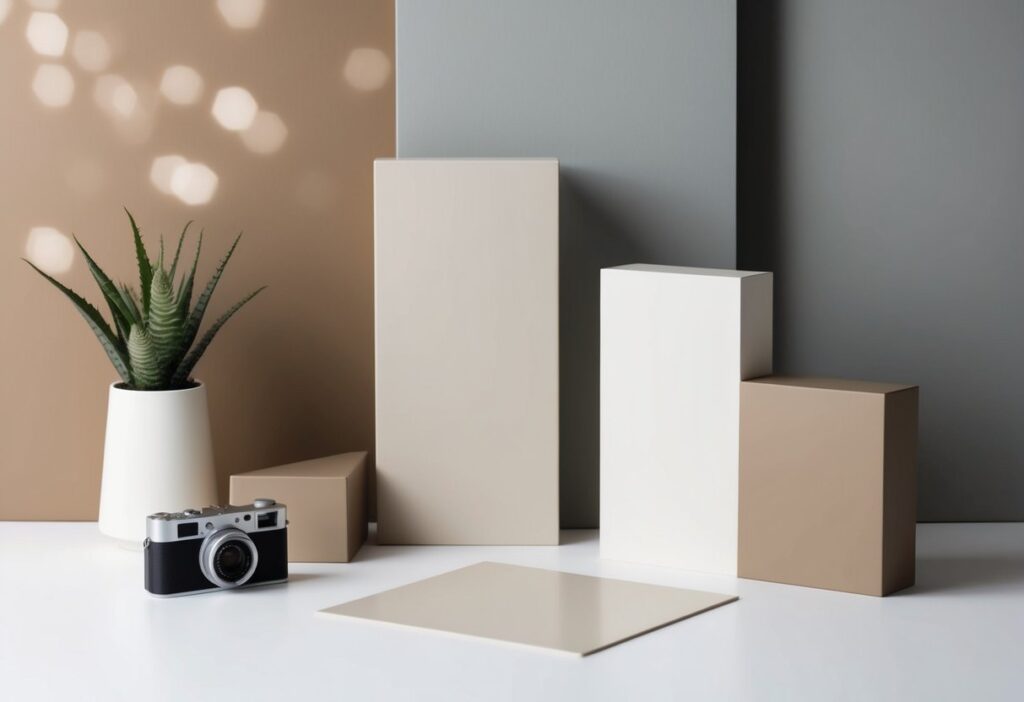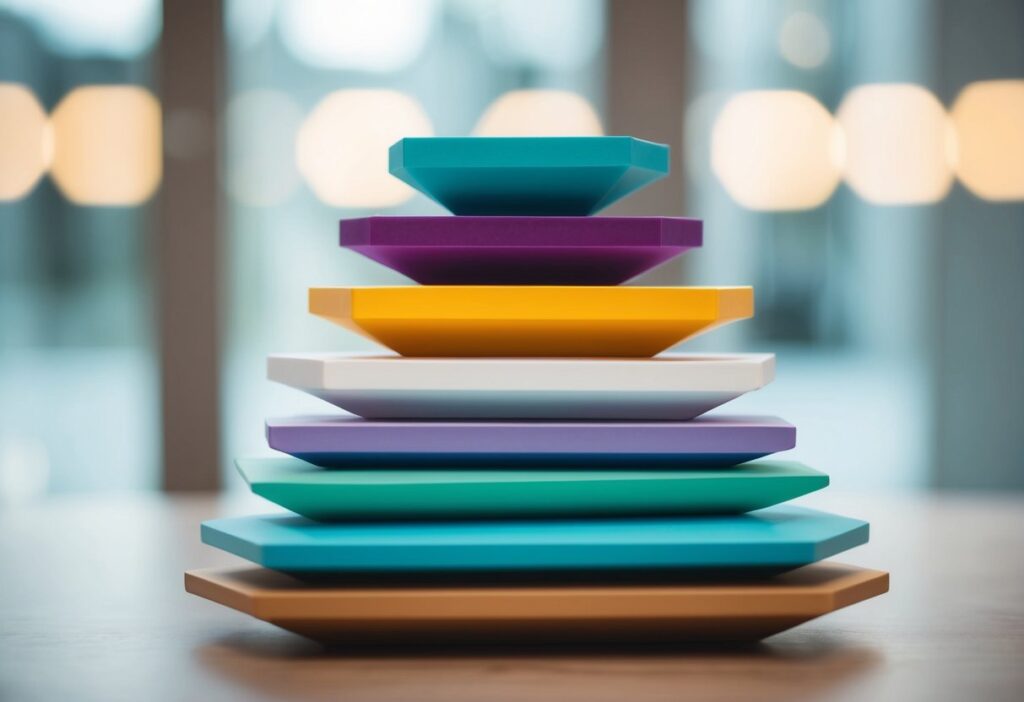Minimalist abstract art is a powerful movement that emphasizes simplicity and purity. It strips away unnecessary details to focus on the essential elements of art, creating a profound impact with basic shapes and colors. This style invites us to experience art in a new way, showing how less can truly be more.
As we explore the origins and evolution of minimalist abstract art, we find that it emerged from earlier modern art movements. Artists began experimenting with how simplicity could convey deeper meanings and emotions. Through reduction and abstraction, this art form challenges traditional views and encourages us to appreciate the beauty in what is not overtly displayed.
Key Takeaways
- Minimalist abstract art emphasizes simplicity and essential elements.
- This art movement evolved from various modern art styles and philosophies.
- It invites viewers to find meaning in reduced forms and colors.
Origins and Evolution of Minimalist Abstract Art
Minimalist abstract art has a rich history that connects deeply with earlier art movements. It emerged from a desire to simplify art and focus on the essential elements. This section explores key phases that shaped minimalist art, along with notable artists and the philosophies behind it.
From Abstract Expressionism to Minimalism
The shift from Abstract Expressionism to Minimalism marked a significant change in the art world. Abstract Expressionism emphasized emotion and individuality, but many artists sought a different approach.
In the late 1950s, artists began to explore simplicity and structure. They rejected the emotional intensity of earlier styles. Instead, they focused on reduction and objectivity. This shift led to the creation of works that used basic forms and colors.
Key figures in this transition included artists like Frank Stella. His black paintings displayed flatness and strong geometric shapes, moving away from gesture-based art. This focus on form paved the way for minimalist ideas, leading to a new visual language.
Influential Minimalist Artists and Their Works

Several artists defined minimalist art in the 1960s and 1970s. Donald Judd is known for his three-dimensional works that emphasize volume and space. His boxes and stacks encouraged viewers to consider how they interact with forms.
Agnes Martin used simple lines and muted colors to evoke serenity. Her works invite contemplation, showcasing the emotional power of minimalism. Similarly, Dan Flavin utilized fluorescent lights to create installations that transformed spaces.
Sol LeWitt’s wall drawings and sculptures employed geometric shapes and systematic patterns. His work reflected the merging of art and math, illustrating minimalism’s intellectual depth. Each artist contributed uniquely, helping shape minimalist abstract art’s identity.
Major Art Movements and Philosophy
Minimalism emerged alongside various other movements, including Conceptual Art. We see that both movements focused on ideas over traditional aesthetics. Minimalism emphasized clarity through reduction, advocating for the viewer’s experience.
The philosophy behind minimalism often embraces a radical simplification of forms. This approach leads to works that minimize distractions, allowing one to focus on the essence of the art.
Furthermore, movements like “Primary Structures” defined minimalist art in America. Artists explored basic geometric shapes, reinforcing the idea that art could exist in its purest form. The simplicity allowed audiences to engage with and appreciate the raw materials of art itself.
Characteristics and Principles of Minimalist Abstraction

Minimalist abstraction focuses on simplicity and clarity. It emphasizes specific elements like lines, colors, and shapes. We will explore how these aesthetics work, their influence on other art forms, and how they create an emotional experience.
Defining Aesthetics and Visual Elements
Minimalist art is marked by its clean lines and basic shapes. Often, we see geometric patterns that promote a sense of order. Artists use a limited color palette, usually favoring solid hues.
Textures may vary, ranging from smooth surfaces to rough, industrial materials. Instead of complex compositions, the goal is reductionism, removing unnecessary items to focus on essential forms. This approach invites viewers to find beauty in simplicity.
The work may use two-dimensional canvases or three-dimensional sculptures. Repetition is common, creating rhythm and harmony. Artists like Kazimir Malevich and Donald Judd highlight this with their focused forms. Each piece encourages us to appreciate visual elements more deeply.
Influence on Other Artistic Domains
Minimalist abstraction has significantly impacted various artistic domains, including graphic design and interior design. Its focus on simplicity and clarity makes it an effective choice in visual communication.
Contemporary artists often draw inspiration from minimalist principles. This influence can be seen in industries like fashion and architecture, where clean lines and functional design are essential. The movement has also inspired installations and land art, where space and material are thoughtfully used.
Musicians, too, incorporate minimalist ideas. Composers often emphasize repetition and structure in their works. This connection between visual art and music reminds us that simplicity can evoke deep emotions and ideas across different mediums.
The Experience of Minimalist Abstract Art
Experiencing minimalist abstract art can evoke a range of emotions. The simplicity directs our focus, allowing us to engage with the art on a personal level.
Each viewer may interpret the work differently. This ability to resonate with specific feelings enhances our connection to the piece. The lack of complex narratives means that we can project our thoughts and experiences onto the artwork.
Visiting a minimalist art space, we might encounter a sense of calm and order. Large installations can create immersive environments that invite reflection. The precision in design might spark curiosity about the artist’s intention, emphasizing a quest for truth through simplicity.
Frequently Asked Questions

In this section, we will answer common questions about minimalist abstract art. Our focus will be on its defining features, key artists, techniques used, and how it fits into various spaces.
What defines the minimalist approach in abstract art?
The minimalist approach in abstract art focuses on simplicity and reducing elements to their essentials. Artists use basic shapes, limited colors, and straightforward forms. This style emphasizes the idea of less is more.
Who are some prominent artists in the minimalist abstract art movement?
Some well-known artists in the minimalist abstract art movement include Donald Judd, Agnes Martin, and Dan Flavin. These artists are famous for their unique styles and contributions to the minimalist aesthetic. Their work helped shape the direction of modern art.
How does minimalist abstract art differ from abstract expressionism?
Minimalist abstract art differs from abstract expressionism in its focus on simplicity rather than emotional expression. While abstract expressionism is full of energy and personal expression, minimalism emphasizes clarity and order. This makes the two styles distinct in their intentions and techniques.
What techniques are commonly used to create minimalist abstract art?
Common techniques in minimalist abstract art include the use of geometric shapes and monochromatic color schemes. Artists often employ industrial materials, like metal or glass, to enhance the clean look. They aim for a sense of balance and harmony in their work.
Can minimalist abstract art be used effectively in interior design?
Yes, minimalist abstract art can enhance interior spaces by creating a calm and modern atmosphere. Its simple forms and colors can complement various design styles. Using this type of art can help achieve a streamlined and sophisticated look in homes or offices.
What should one consider when purchasing minimalist abstract art prints?
When purchasing minimalist abstract art prints, consider the size, color palette, and overall aesthetic. Think about how the piece will fit into your space and its impact on the environment. It’s also important to check the quality of the print and framing options.


